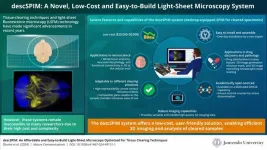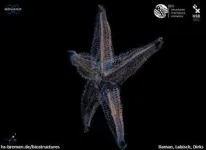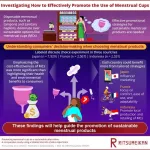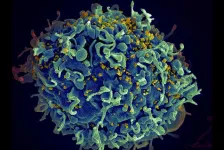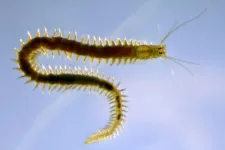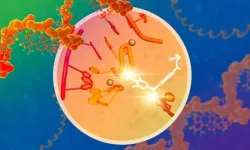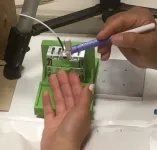Three-dimensional (3D) imaging of organs and tissues is vital as it can provide important structural information at the cellular level. 3D imaging enables the accurate visualization of tissues and also helps in the identification of pathological conditions. However, achieving successful 3D imaging necessitates specific prerequisites, including the preparation of 'cleared' tissue samples—biological specimens rendered transparent by removing light-scattering components like lipids to enable comprehensive visualization of internal structures—utilization of fluorophores and adoption of an appropriate imaging technique. Selective plane illumination microscopy (SPIM) is a type of light sheet fluorescence microscopy (LSFM), which is one such 3D imaging technique employing a thin sheet of light to illuminate cleared tissues.
Significant advancements in tissue clearing techniques have aided their extensive use in biomedical imaging. However, LSFM systems have faced accessibility challenges due to high costs and complexity. To address this issue, a team of researchers from Juntendo University in Japan, comprising Associate Professor Kohei Otomo, Mr. Takaki Omura and Professor Etsuo A. Susaki developed an innovative, low-cost LSFM called descSPIM – desktop-equipped SPIM for cleared specimens. They optimized the design of the microscope for rapid imaging of cleared tissue samples and verified its utility as an imaging tool using animal studies. Their findings were published on June 12, 2024 in Volume 15 of Nature Communications.
Explaining the motivation behind the development of descSPIM, corresponding author, Susaki says, "LSFM remain prohibitively expensive for many end users, despite advancements in tissue clearing technologies. When I recognized this bottleneck, I wanted to develop an affordable and sufficiently performing light-sheet microscopes to enhance accessibility in biomedical research.” The team developed the descSPIM microscopic system with a focus on cost reduction, bringing the price down to approximately between $20,000 and $50,000. They also employed a simplistic design that requires less expertise for both assembly and operation.
The researchers also incorporated numerous unique features like utilizing a glass cuvette to replace the medium chamber and a two-stage synchronization process during imaging. Additionally, the mechanism of capturing optical data and converting them into images was streamlined, which resulted in a significant decrease of the overall time required for imaging.
Further, the researchers validated the applications of descSPIM for 3D visualization of multiple cleared tissues and organs. descSPIM successfully imaged volumetric whole-brain samples of transgenic mice, allowing visualization of neuronal structures and distributions with cellular resolution. In cancer cell line-derived xenograft (CDX) models, descSPIM enabled 3D imaging of entire tumor masses, facilitating visualization of drug distribution within the tumor tissues. Furthermore, descSPIM was used to generate 3D images of thick tumor sections stained with fluorescent dyes, mimicking standard hematoxylin-eosin (HE) staining. While the resolution for clinical pathology examination was relatively low, it demonstrated the potential of descSPIM for future diagnostic applications.
The team open-sourced the design of descSPIM to facilitate extensive academic dissemination. “Commercial microscopy systems are generally designed as black boxes, where the internal mechanism is unknown to the users. However, the accessible design and open-source nature of descSPIM represent a departure from this norm. Its user-friendly construction and open-sourced nature foster a collaborative environment conducive to the development of pioneering imaging technologies,” explains Otomo, the first author of the study.
Researchers globally have embraced the descSPIM system for a myriad of research endeavors, spanning from the detailed imaging and visualization of various organs, including the brain, hypothalamus, stomach, and intestine in mice and rats, to investigating cancer metastasis in the lungs. These diverse applications underscore the versatility and effectiveness of descSPIM across different biological contexts. Delving into the implications of their findings Otomo says, “When compared to commercially available light-sheet microscopes, our proposed DIY system is more than 10 times less expensive and strongly supports the dissemination of the tissue clearing and 3D imaging technology”.
In conclusion, the low-cost, simplistic yet innovative design of descSPIM light-sheet microscopy system has the potential to accelerate scientific research and result in path-breaking biomedical discoveries.
Reference
Authors
Kohei Otomo1,2,3,4,5, Takaki Omura1,3,6,7, Yuki Nozawa2, Steven J. Edwards8, Yukihiko Sato1,3, Yuri Saito1,3, Shigehiro Yagishita9,10, Hitoshi Uchida11, Yuki Watakabe4,5, Kiyotada Naitou12, Rin Yanai13, Naruhiko Sahara13, Satoshi Takagi14, Ryohei Katayama14, Yusuke Iwata15, Toshiro Shiokawa15, Yoku Hayakawa15, Kensuke Otsuka16, Haruko Watanabe-Takano17, Yuka Haneda17, Shigetomo Fukuhara17, Miku Fujiwara18, Takenobu Nii18, Chikara Meno18, Naoki Takeshita19,20, Kenta Yashiro19, Juan Marcelo Rosales Rocabado21, Masaru Kaku21, Tatsuya Yamada22, Yumiko Oishi23, Hiroyuki Koike23, Yinglan Cheng23, Keisuke Sekine24, Jun-ichiro Koga25, Kaori Sugiyama26, Kenichi Kimura27, Fuyuki Karube28, Hyeree Kim29, Ichiro Manabe29, Tomomi Nemoto4,5, Kazuki Tainaka11, Akinobu Hamada9,10, Hjalmar Brismar8, and Etsuo A. Susaki1,2,3*
Title of original paper
descSPIM: an affordable and easy-to-build light-sheet microscope optimized for tissue clearing techniques
Journal
Nature Communications
DOI
10.1038/s41467-024-49131-1
Affiliations
Department of Biochemistry and Systems Biomedicine, Juntendo University Graduate School of Medicine
Biochemistry II, Juntendo University School of Medicine
Nakatani Biomedical Spatialomics Hub, Juntendo University Graduate School of Medicine
Division of Biophotonics, National Institute for Physiological Sciences, National Institutes of Natural Sciences
Biophotonics Research Group, Exploratory Research Center on Life and Living Systems, National Institutes of Natural Sciences
Department of Neurosurgery, University of Tokyo
Department of Neurosurgery and Neuro-Oncology, National Cancer Center Hospital
Science for Life Laboratory, 26 Department of Applied Physics, KTH Royal Institute of Technology
Department of Pharmacology and Therapeutics, Fundamental Innovative Oncology Core, National Cancer Center Research Institute
Division of Molecular Pharmacology, National Cancer Center Research Institute
Department of System Pathology for Neurological Disorders, Brain Research Institute, Niigata University
Department of Basic Veterinary Science, Joint Faculty of Veterinary Medicine, Kagoshima University
Advanced Neuroimaging Center, Institute for Quantum Medical Sciences, National Institutes for Quantum Science and Technology
Division of Experimental Chemotherapy, Cancer Chemotherapy Center, Japanese Foundation for Cancer Research
Department of Gastroenterology, Graduate School of Medicine, The University of Tokyo
Biology and Environmental Chemistry Division, Sustainable System Research Laboratory, Central Research Institute of Electric Power Industry
Department of Molecular Pathophysiology, Institute for Advanced Medical Sciences, Nippon Medical School
Department of Developmental Biology, Graduate School of Medical Sciences, Kyushu University
Anatomy and Developmental Biology, Kyoto Prefectural University of Medicine
Department of Pediatrics, Kyoto Prefectural University of Medicine
Division of Bio-prosthodontics, Faculty of Dentistry & Graduate School of Medical and Dental Sciences, Niigata University
Department of Biochemistry, University of Nebraska-Lincoln
Department of Meidical Biochemistry, Tokyo Medical and Dental University
Laboratory of Cancer Cell Systems, National Cancer Center Research Institute
The Second Department 54 of Internal Medicine, University of Occupational and Environmental Health
Institute for Advanced Research of Biosystem Dynamics, Research Institute for Science and Engineering, Waseda University
Life Science Center for Survival Dynamics, Tsukuba Advanced Research Alliance (TARA), University of Tsukuba
Lab of Histology and Cytology, Graduate School of Medicine, Hokkaido University
Department of Systems Medicine, Graduate School of Medicine, Chiba University
About Associate Professor Kohei Otomo
Kohei Otomo serves as an Associate Professor at the Graduate School of Medicine, Juntendo University, Japan. His research interests include bio-imaging technologies such as light-sheet microscopy, two-photon microscopy, super-resolution microscopy, and also spectroscopy of biomolecules. Over the last decade, he has published 30 research papers in peer-reviewed, high-impact factor journals and developed 3 patents. He has been actively involved in numerous research projects and won several awards for his research excellence.
END
